The Cathedral of Our Lady (Onze-Lieve-Vrouwekathedraal) in Antwerp is a Roman Catholic cathedral whose construction began in 1352 and continued until 1521. It was built on the site of an earlier Romanesque church and designed primarily in the Brabantine Gothic style. The cathedral was intended to have two towers, but only the north tower, completed in 1518 and rising to a height of 123 meters, was finished. Over the centuries, the building has undergone various modifications due to fires, iconoclastic destruction in the 16th century, and subsequent restorations.
Crowning the cathedral tower is a gilded weathercock, while the largest bell, Carolus (cast in 1507 and named after the future Emperor Charles V), still rings on major occasions. Weighing nearly six tons, it required, before the advent of modern mechanisms. sixteen men across four levels to set it in motion.

Cathedral of Our Lady - facade with tower
The interior of the church is 118.11 meters long, with the central nave reaching a height of 27.25 meters. The nave is flanked by six aisles, creating a vast and complex spatial arrangement. At its crossing, a lantern rises to 43.7 meters high; originally a simple wooden Renaissance structure placed in 1534 after a fire, it was reworked in the 19th century with a late Baroque finish. Located at the top of the lantern, Mary’s Assumption was painted by Cornelis Schut in 1648.

nave
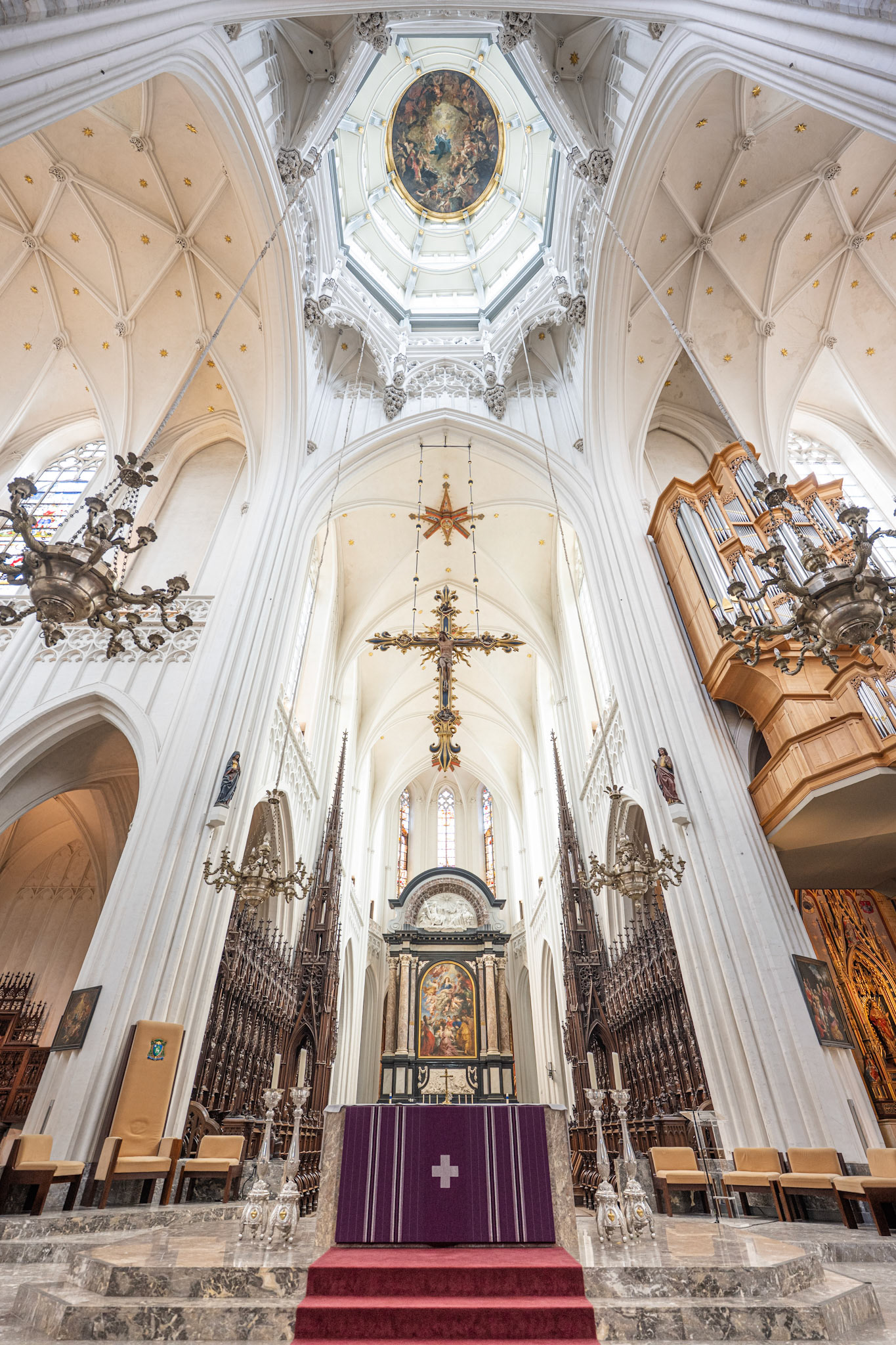
crossing altar

crossing lantern with Mary’s Assumption painted by Cornelis Schut
In 1889, Pierre Schijven began building an organ with four manuals, a 30-key pedal board, and 90 stops. Hidden behind an Baroque organ case, the instrument features 5,777 pipes, making it the largest historic organ in Belgium. In 1993, a second organ was installed in the southern transept by Swiss builder Metzler, featuring three manuals, 45 stops, and 3,322 pipes.
Our Lady’s Cathedral is particularly celebrated for its masterpieces by Peter Paul Rubens. The Descent from the Cross, painted in 1611–1612, remains close to its original location in the southern transept. Seized by French troops in 1794 during the occupation, the triptych was taken to Paris but was returned to the cathedral in 1816 following Napoleon’s defeat.
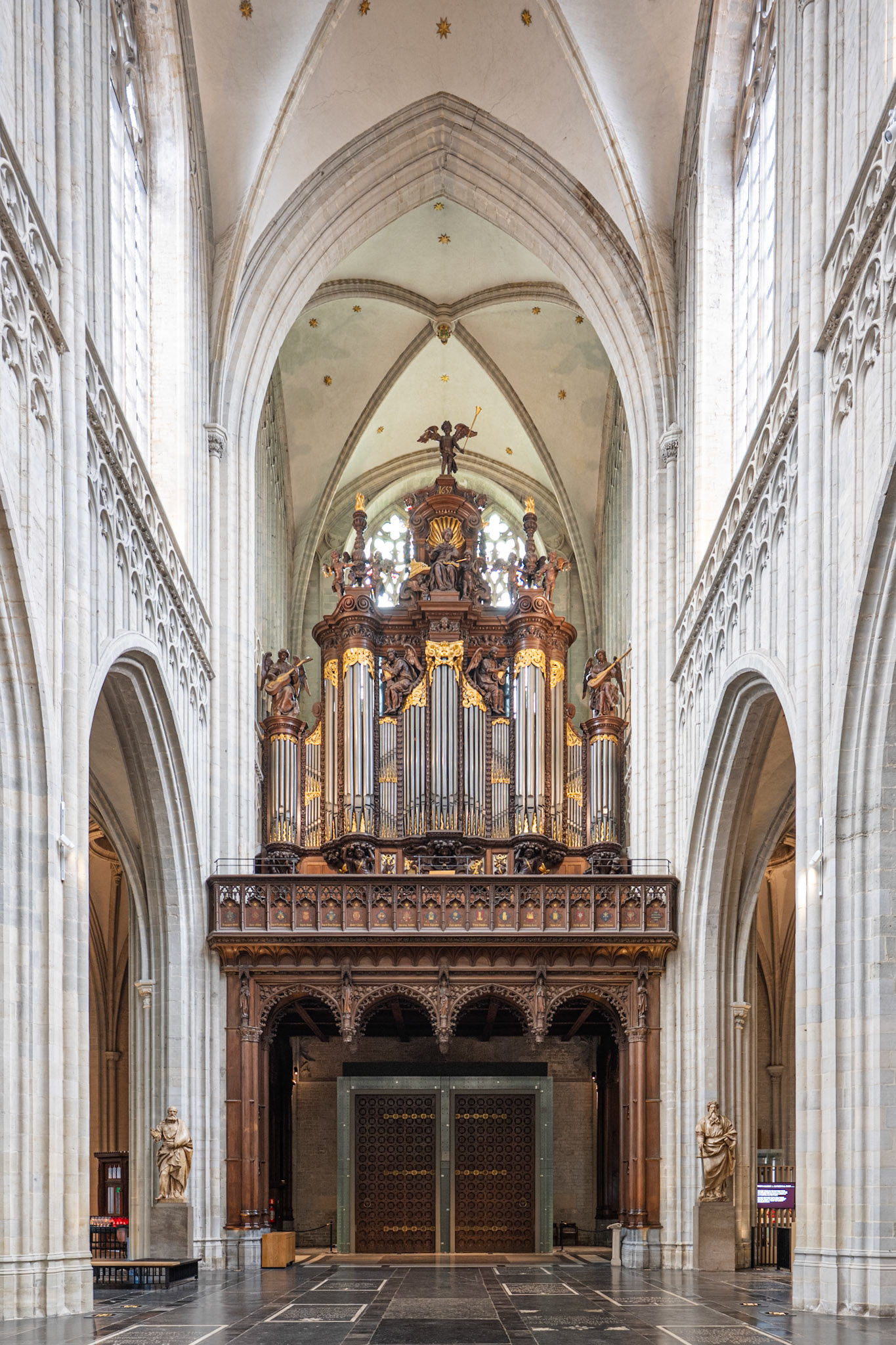
Pierre Schijven organ

Metzler organ
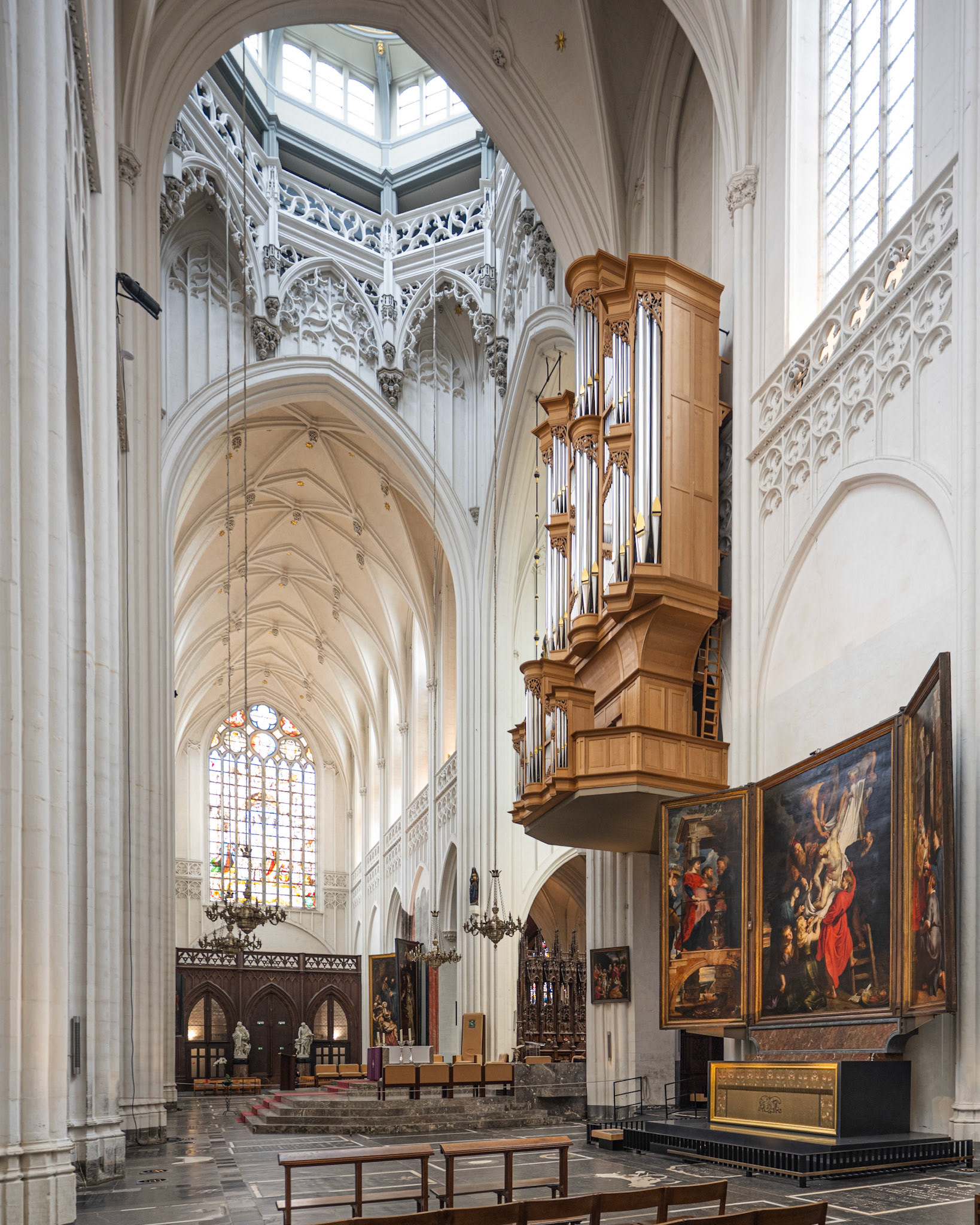
Descent from the Cross, Rubens
During the 1803 refurbishment of the church, the pulpit from the Cistercian Abbey of Saint Bernard in Hemiksem was acquired. Crafted in 1713 by Michiel I van der Voort, the pulpit is notable for its naturalistic rendering of flora and fauna. Instead of a conventional support column, the platform rests on four expressive, life-like figures.
The altar of the Blessed Sacrament Chapel features the 1808 painting The Supper at Emmaus by Willem Jacob Herreyns.
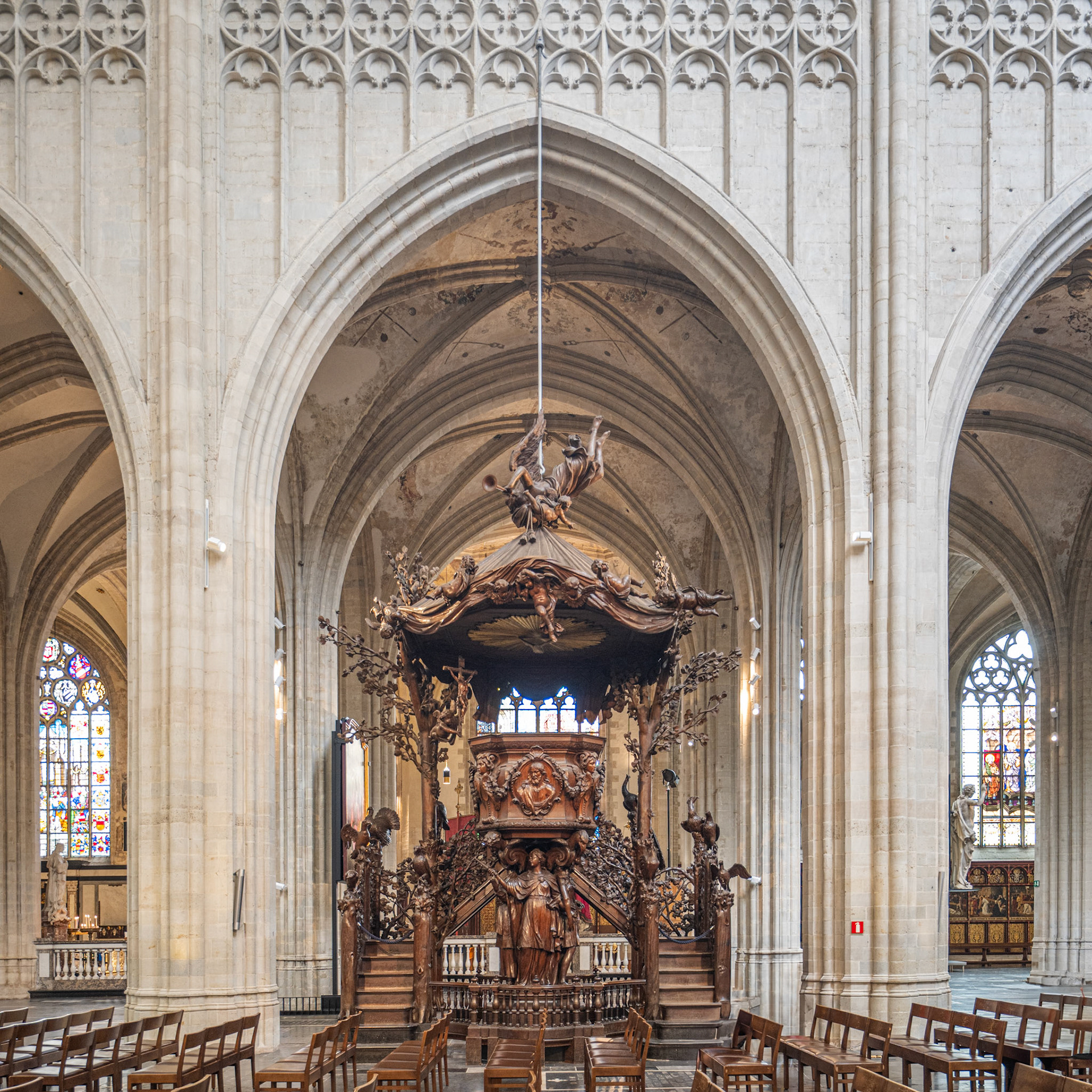
pulpit by Michiel I van der Voort
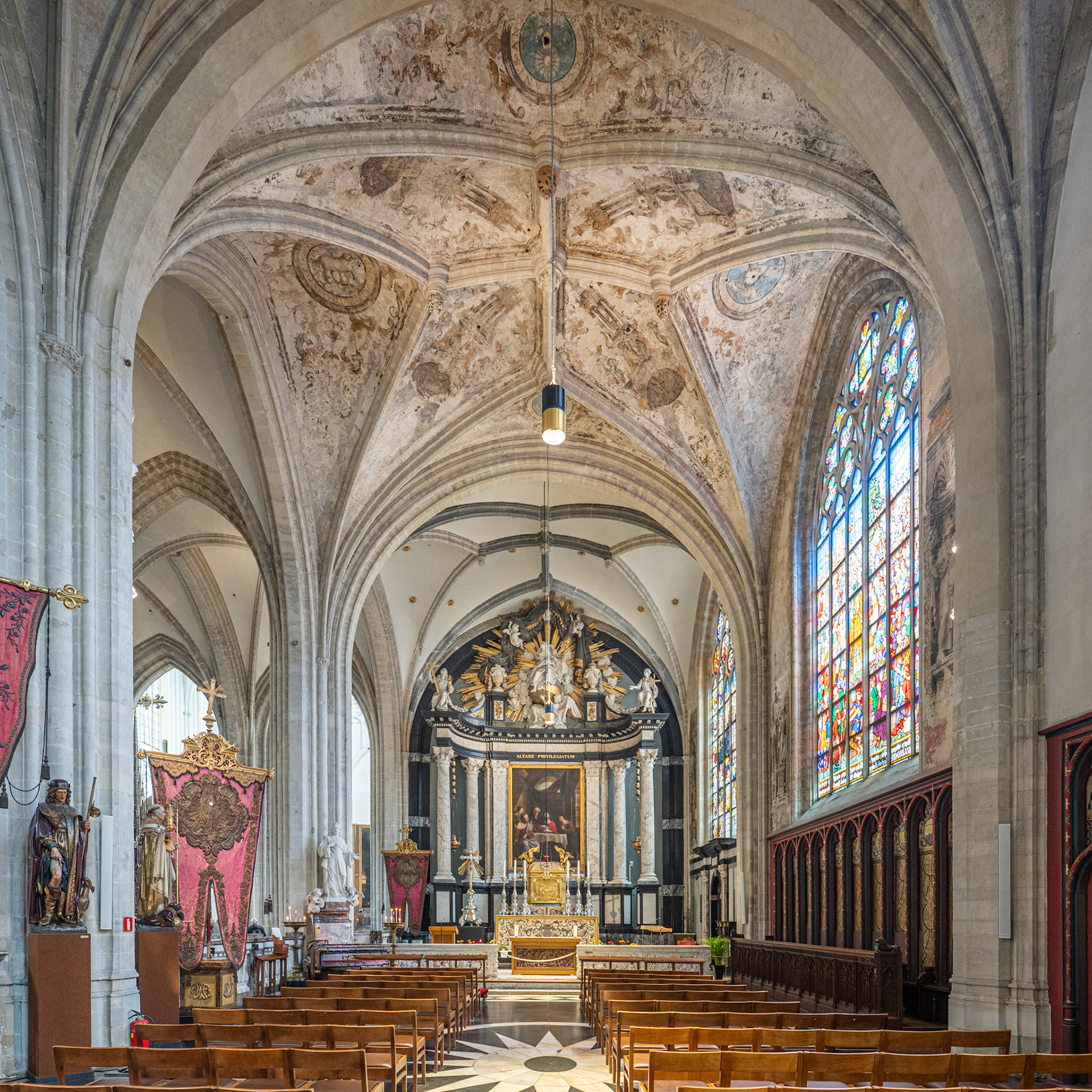
Blessed Sacrament Chapel
In the mid-19th century, the Gothic Revival led to a comprehensive neo-Gothic refurbishment of the cathedral, which included the addition of dozens of stained glass windows. In St. Barbara’s Chapel, the left stained-glass window was created by Jean-Baptiste Bethune in 1864, while the central and right windows were produced by the workshop of August Stalins and Alfons Janssens between 1889 and 1890. In the Chapel of the Sacred Heart of Jesus, Edouard Didron’s 1872 stained-glass window depicts the lamentation over the dead Christ.

stained glass windows in the St. Barbara’s Chapel
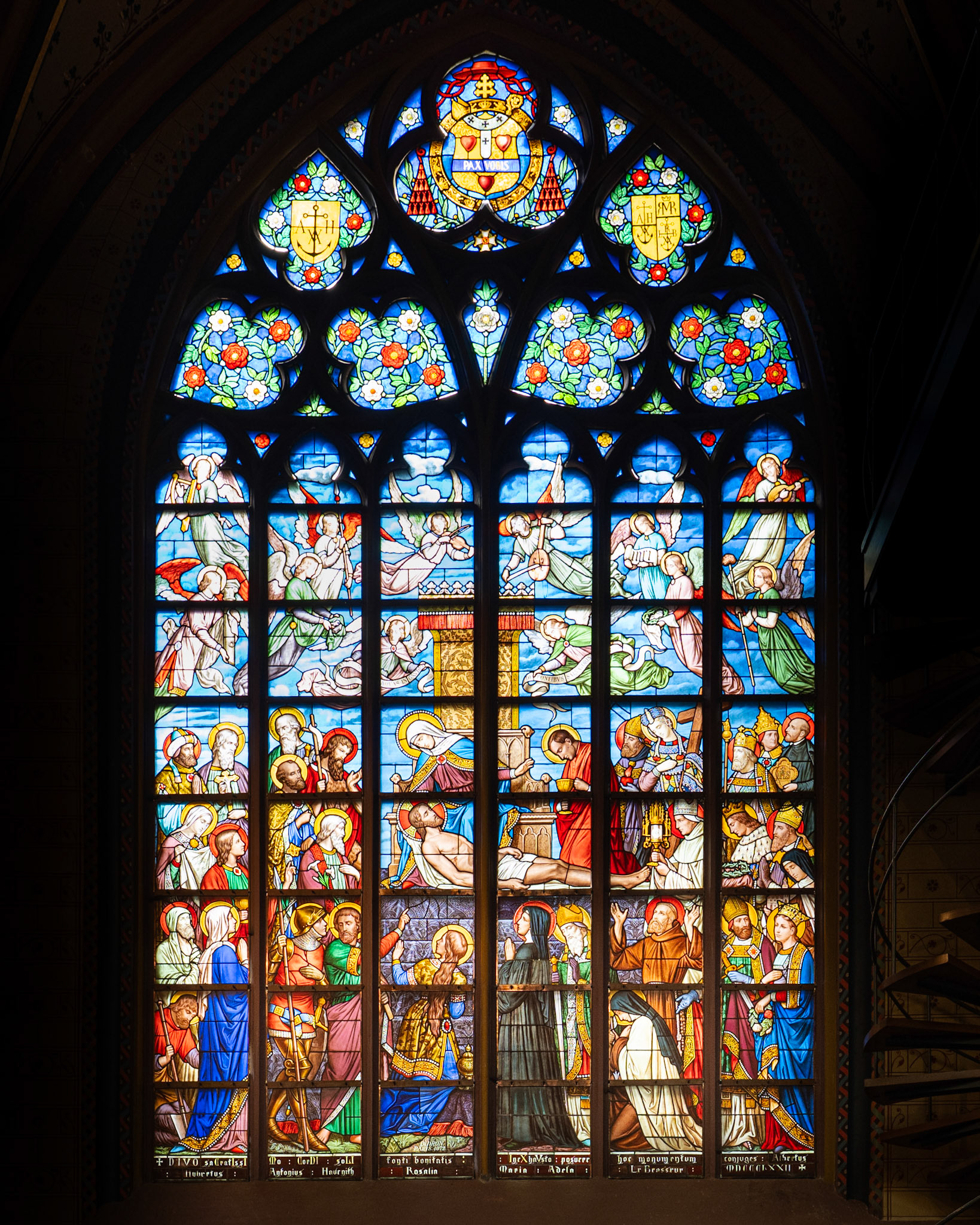
stained glass windows of the Chapel of the Sacred Heart of Jesus
You may also like